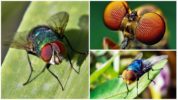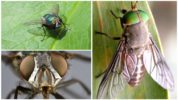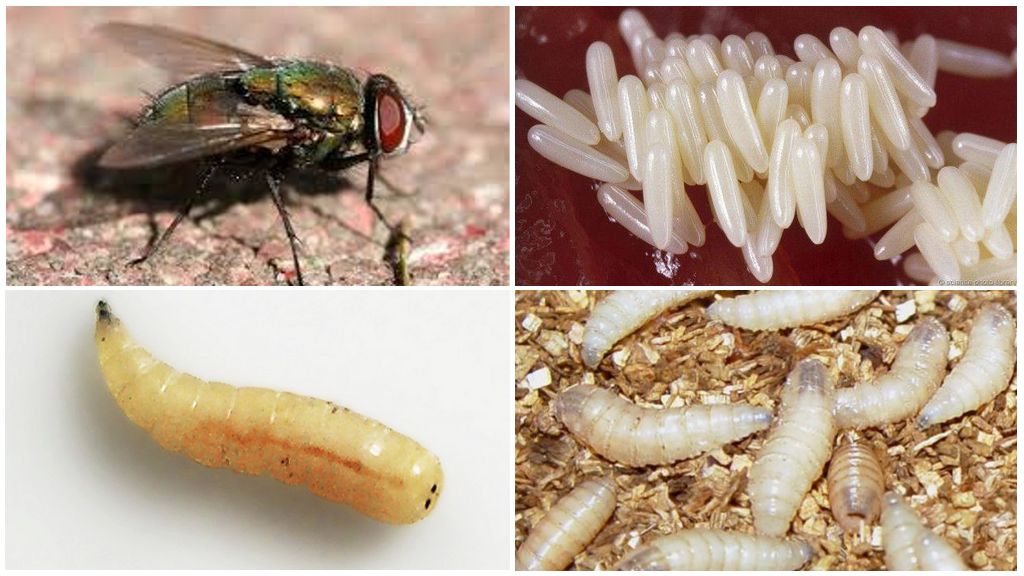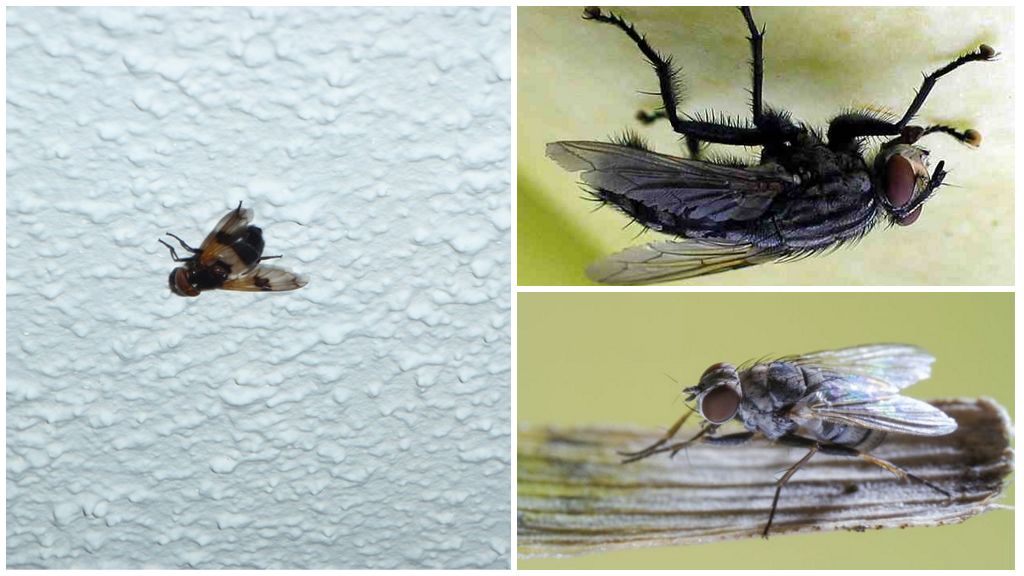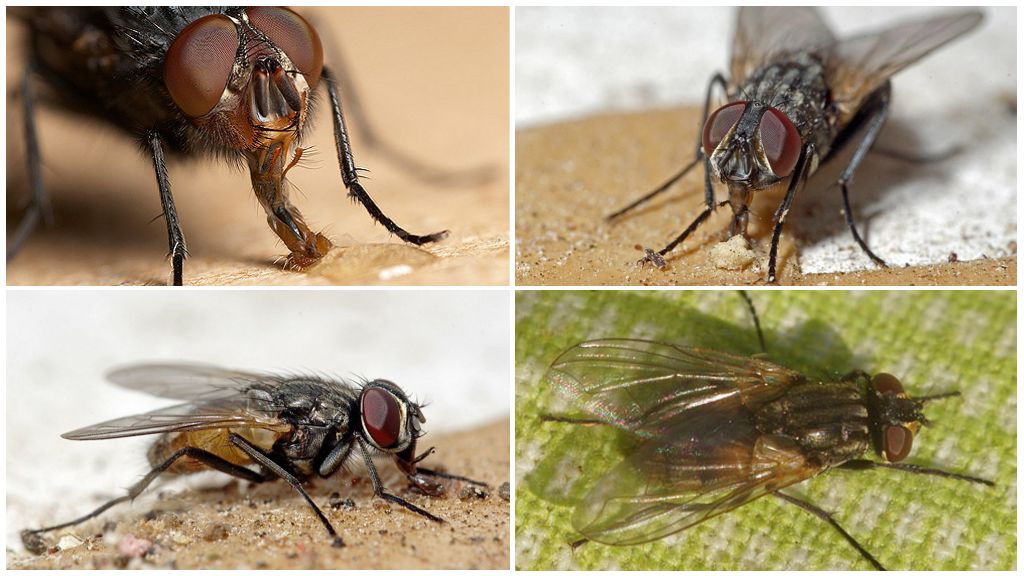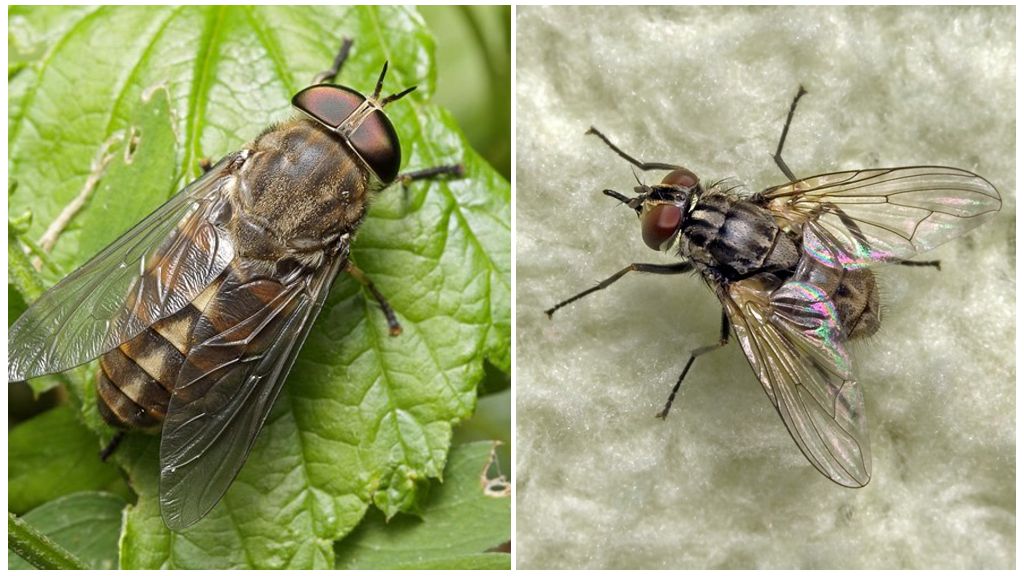- Fly visual apparatus
- Eyes of a fly
All people know that it is very difficult to catch or slam a fly: it sees very well and instantly reacts to any movements, flying up. The answer lies in the unique vision of this insect. The answer to the question of how many eyes a fly has will help to understand the reason for its elusiveness.
Visual device
A home or ordinary fly has a black-gray body color up to 1 cm long and a slightly yellow abdomen, 2 pairs of gray wings and a head with large eyes. It belongs to the most ancient inhabitants of the planet, as evidenced by the data of archaeologists who discovered specimens dating back 145 million years.
When examining the head of a fly under a microscope, you can see that she has very original voluminous eyes located on both sides. As can be seen in the photo of the eyes of the flies, they are visually similar to a mosaic composed of 6-sided structural units, which are called facets or ommatidia, similar to the structure of honeycombs. Translated from French, the word "fasette" means facets. Due to this, the eyes are called faceted.
How to understand what a fly sees in comparison with a person whose vision is binocular, that is, is made up of two pictures that 2 eyes see? In insects, the visual apparatus is more complex: each eye consists of 4 thousand facets, showing a small part of the visible image. Therefore, the formation of the overall picture of the external world in them occurs on the principle of "collecting puzzles", which allows us to talk about the uniqueness of the brain structure of flies that can process more than 100 frames of images per second.
On a note!
Faceted vision is found not only in flies, but also in other insects: bees have 5 thousand facets, butterflies have 17 thousand, and dragonfly record holders have up to 30 thousand ommatidia.
As the fly sees
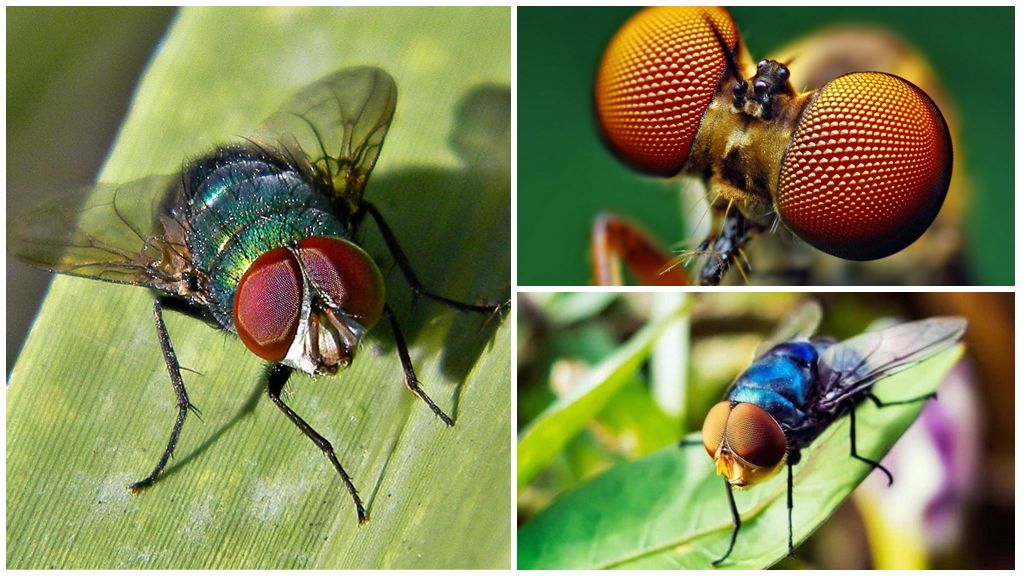
Such a device of the visual organs does not allow the fly to concentrate on a specific object or object, but shows the general picture of the entire surrounding space, which allows you to quickly notice the danger. The viewing angle of each eye is 180 °, which together is 360 °, i.e. the type of vision is panoramic.
Thanks to this eye structure, the fly perfectly observes everything around, including a person who is trying to sneak up behind. Control over the entire surrounding space provides her with 100% defense against all troubles, including from people gathering kill the fly.
In addition to the 2 main, the flies have 3 more ordinary eyes located on the forehead in between the facet. These organs allow them to view nearby objects more clearly for recognition and instant reaction.
Interesting!
Summing up all the data, it can be stated that the fly’s vision is represented by 5 eyes: 2 facet - to control the surrounding space and 3 simple ones - to sharpen and recognize objects.
Features of the visual abilities of flies
Sight of the common fly has many more interesting features:
- the primary colors and their shades of a fly are distinguished perfectly, in addition, they are also able to distinguish ultraviolet rays;
- they see absolutely nothing in the dark and therefore sleep at night;
- however, they pick up some colors from the whole palette a little differently, therefore they are conventionally considered color blind;
- the facet device of the eyes allows you to fix everything at the same time at the top, bottom, left, right and front and makes it possible to quickly respond to an approaching danger;
- the eyes of a fly distinguish only small objects, for example, the approach of a hand, but they don’t perceive a large figure of a person or furniture in the room;
- in males, the facet eyes are closer to each other compared to females having a wider forehead;
Interesting!
The fact of how many frames per second the fly sees is also evidence of visual acuity. For comparison, the exact numbers: a person perceives only 16, and a fly - 250-300 frames per second, which helps her to navigate perfectly at fast speed in flight.
Flicker Characteristics
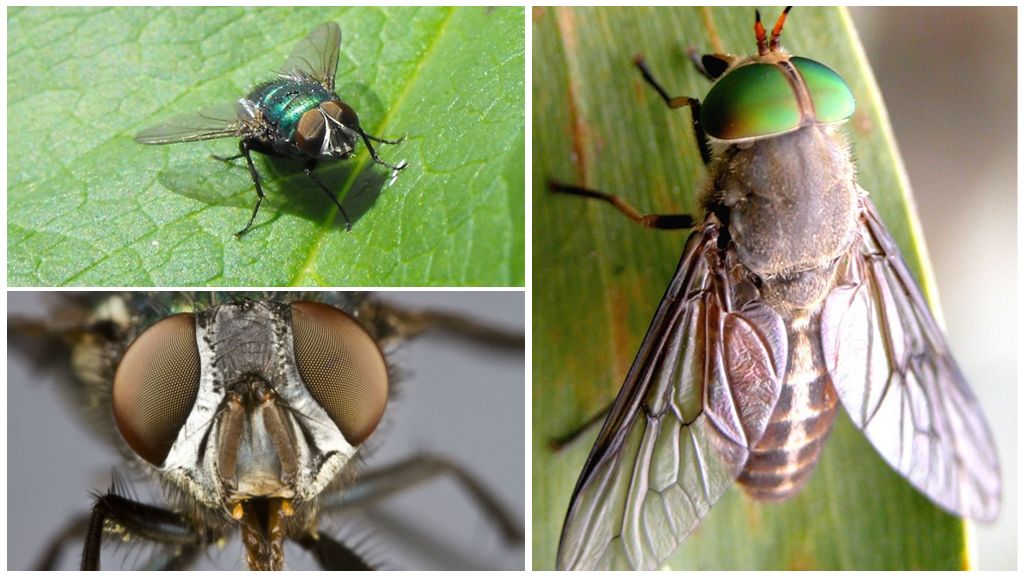
There is an indicator of visual abilities, which is associated with the frequency of flickering of the image, that is, its lowest border, at which the light is fixed as a constant source of illumination. It is called CFF - critical flicker-fusion frequency. Its value shows how quickly the eyes of the animal are able to update the image and process visual information.
A person is able to capture a flicker frequency of 60 Hz, i.e., an image is updated 60 times per second, which is adhered to when displaying visual information on a television screen. For mammals (dogs, cats), this critical value is 80 Hz, which is why they usually do not like watching TV shows.
The higher the flicker frequency, the more biological benefits the animal has. Therefore, for insects in which this value reaches 250 Hz, this is manifested in the possibility of a faster reaction to danger. Indeed, for a person approaching “production” with a newspaper in his hands with the intention of killing it, the movement seems to be fast, but the unique structure of the eye housefly allows her to catch even instantaneous movements as if in slow motion.
According to the biologist K. Gili, such a high critical frequency of flicker in flies is due to their small size and rapid metabolism.
Interesting!
The difference in CFF for different types of vertebrates looks like this: the smallest 14 Hz - for eels and turtles, 45 - for reptiles, 60 for people and sharks, for birds and dogs - 80, for gophers - 120.
The above analysis of visual abilities allows us to understand that the world through the eyes of a fly looks like a complex system of a large number of pictures, by analogy with small video cameras, each of them transmits information about a small part of the surrounding space to an insect. The assembled image allows flies at one glance to keep a visual "circular defense" and instantly respond to the approach of enemies. Researches of scientists of such visual abilities of insects allowed to be engaged in the development of flying robots, in which computer systems control the position in flight, simulating the vision of flies.
